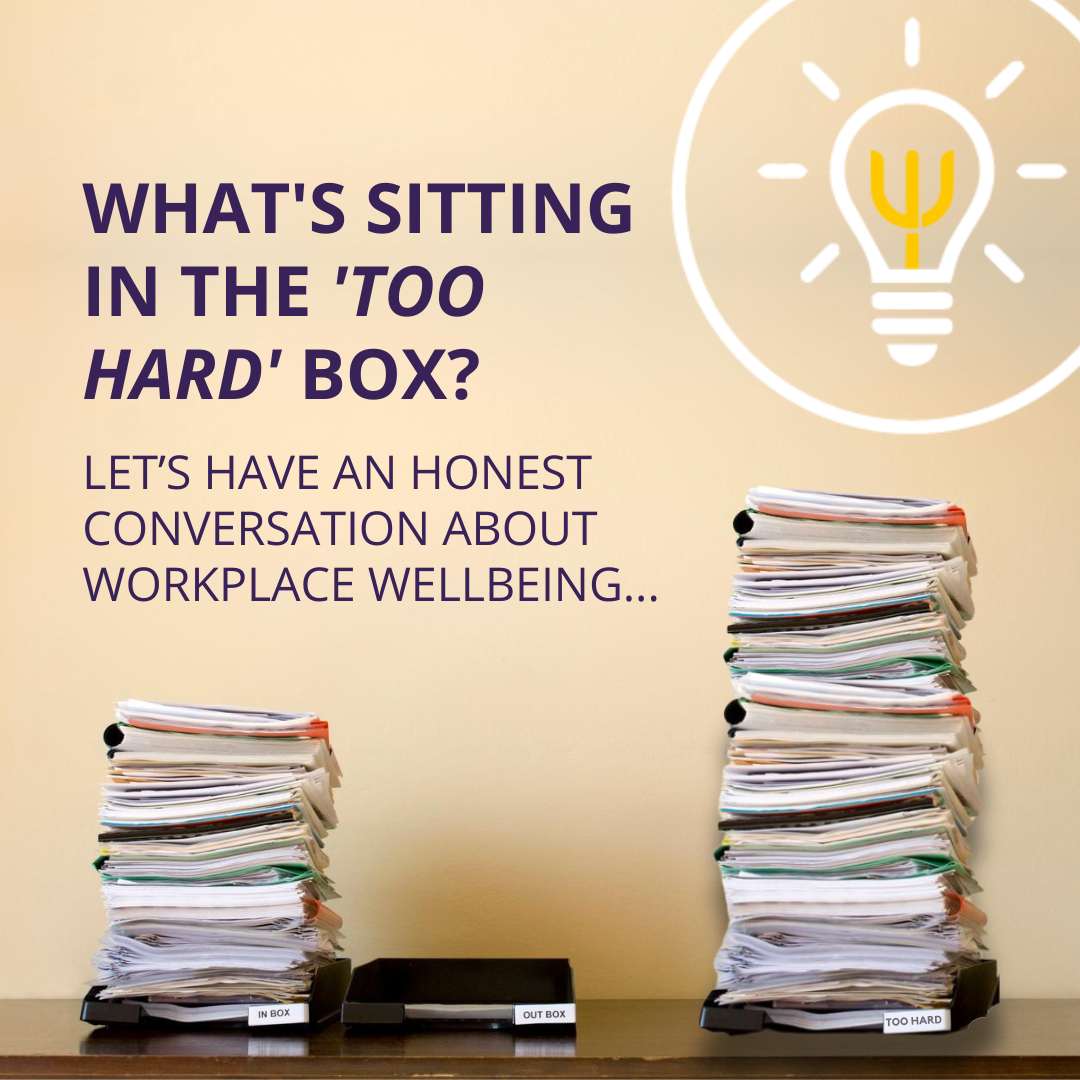Asses, align and thrive. Why a wellbeing audit matters now more than ever.
Here’s 7 reasons why every HR Leader should conduct a Wellbeing Audit this year.
In today’s rapidly shifting work environments keeping the spotlight employee wellbeing has never been more important. With levels of poor wellbeing and mental health issues continuing to rise, businesses still figuring out how to make hybrid working work, and the unrelenting demands of modern business and shrinking budgets, HR leaders have A LOT on their shoulders. Not only are they increasingly responsible for ensuring that employees are not just productive, but also healthy, engaged, and resilient - never mind figuring out how to build a compelling employer brand that stands out in a competitive talent market.
To navigate these demands, a wellbeing audit has can be an essential tool in the HR Leader toolbox. By conducting a thorough assessment of your organisation’s current wellbeing initiatives, you can gain valuable insights into what’s working, identify gaps, uncover potential cost savings, and develop a cohesive strategy that truly supports your workforce.
If it’s not already on your agenda, here’s why making a wellbeing audit a priority this year is essential.
1. Truly understand the current state of your employees’ wellbeing.
A wellbeing audit provides a comprehensive overview of the current state of employee health and wellbeing within your organization. It’s more than just a surface-level review; it digs deep into the physical, mental, emotional, and social aspects of your employees' wellbeing. By collecting this data, HR leaders can uncover what’s truly going on beneath the surface—what’s working, what’s not, and where there are hidden gaps that might be impacting productivity, engagement, and retention.
But it’s not just about identifying problems. A wellbeing audit also evaluates the effectiveness of your existing wellbeing initiatives. Are your programs really making a difference? Are employees engaging with them? Is the impact measurable? Understanding the answers to these questions is essential to ensure that your efforts are truly benefiting your workforce.
2. Evaluate and refine existing wellbeing initiatives
One of the key benefits of a wellbeing audit is the opportunity to critically evaluate your current offerings. Many organisations have a variety of wellbeing programmes and initiatives in place, from Employee Assistance Programmes (EAPs) fitness challenges to Wellbeing Champions and online mental health resources, but are these initiatives truly effective? Are they being used? Are they delivering the intended outcomes?
A wellbeing audit allows you to take stock and assess impact. This evaluation process helps identify which of your wellbeing offerings are hitting the mark and which might need a rethink. It’s about moving beyond simply having a list of wellbeing activities to having a clear understanding of what’s really making a difference in your organisation…. and then joining the dots!
3. Creating a Cohesive Wellbeing Strategy
All too often, organisations end up with a collection of disparate wellbeing initiatives—well-intentioned, but not necessarily connected in a meaningful way. This can lead to confusion, low engagement, or missed opportunities to make a real impact. A wellbeing audit can help you step back and see the bigger picture.
By assessing how each initiative fits into the overall strategy, you can start to create a genuinely cohesive approach to employee wellbeing. It’s about aligning all efforts under a unified vision that not only addresses immediate needs but also supports long-term goals. This kind of strategic alignment ensures that your wellbeing programmes are not just a series of isolated efforts but a powerful, integrated part of your organisational culture.
4. Achieve better alignment of your wellbeing initiatives with organisational goals.
A wellbeing audit also allows you to align your wellbeing strategies with your organisation’s broader goals. For instance, if increasing employee engagement is a priority, an audit can reveal which factors most influence engagement within your company - whether it’s work-life balance, access to mental health resources, or opportunities for professional development.
By aligning your wellbeing initiatives with these insights, you ensure that your programmes are not just enhancing employee satisfaction, but also maximising impact, efficiencies and driving key business outcomes. And when you can clearly demonstrate how wellbeing contributes to business success, securing buy-in from senior leadership becomes a much (much) easier task.
5. Enhance employee engagement, retention… and your employer brand.
Kind of stating the obvious here, but just to say out loud for those in the back, there is a clear connection between employee wellbeing, engagement, retention - and even attraction. When employees feel supported and valued, they’re more likely to be engaged in their work and committed to your organisation.
A wellbeing audit provides the data needed to understand what’s driving or hindering engagement and retention within your workforce. By addressing the issues identified in the audit, you can create a work environment that fosters engagement and reduces turnover, builds your employer brand, and ultimately leading to a more stable, engaged and productive workforce.
6. Proactive risk management
The power of a wellbeing audit as a critical tool for proactive risk management is not to be underestimated, as they can often identify potential issues before they escalate. With a sole focus on wellbeing, they can pick up on underlying trends that may not be surfaced via broader employee listening or engagement activities.
With risks identified, you can take steps to mitigate issues that could otherwise lead to costly outcomes, such as greater levels of absenteeism, higher healthcare costs, or legal liabilities related to workplace stress and mental health. This proactive approach not only protects the wellbeing of employees but also reduces the potential for negative impacts on the organization.
7. Build a culture of wellbeing
Finally, conducting a wellbeing audit demonstrates a commitment to building a culture of wellbeing within the organisation. It sends a powerful message to your workforce: that their health and happiness are a priority. When employees see that their employer is genuinely invested in their wellbeing, it builds trust and loyalty. This, in turn, helps foster a positive workplace culture where wellbeing is not just a buzzword, but a core value.
A wellbeing audit is more than just a diagnostic tool; it’s a catalyst for creating a thriving workplace. By regularly assessing the state of employee wellbeing, HR leaders can ensure their strategies remain relevant, impactful, and aligned with the ever-changing dynamics of the work environment.
Final thoughts…
In an era where employee wellbeing is increasingly recognised as a critical factor in organisational success, conducting a wellbeing audit is no longer optional—it’s essential. By understanding the current state of wellbeing, aligning initiatives with business goals, enhancing engagement and retention, managing risks, and building a culture of wellbeing, HR leaders can create a thriving workplace that supports both the health of employees and the success of the organisation. This year, make a wellbeing audit a priority and lay the foundation for a healthier, more resilient workforce.
Find out more…
If you would like to know more about how Psychology Works could help you with your wellbeing audit, just give us a shout! On 01273 569314 or hello@psychologyworks.global.
How Psychology Works have helped organisations put wellbeing at the heart of their business…
Client Story: Talent, transformation and triumph. An awarding-winning tale of organisational change at the SDT.
Encore…
In the meantime, if you’ve enjoyed Maria’s ramblings why not check out some of our other blogs and thought pieces. For real time updates and insights you can also find us on LinkedIn, our social media platform of choice: @PsychologyWorks and @mariagardner























